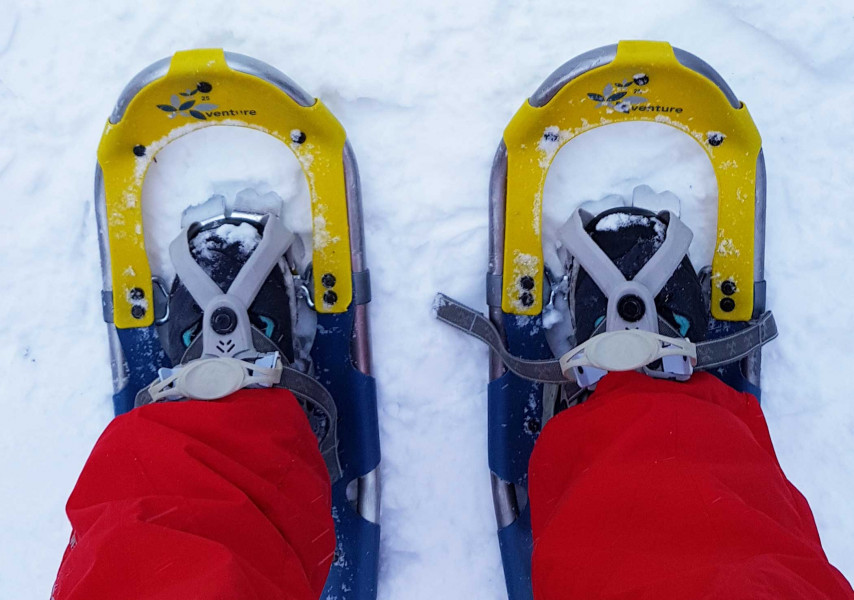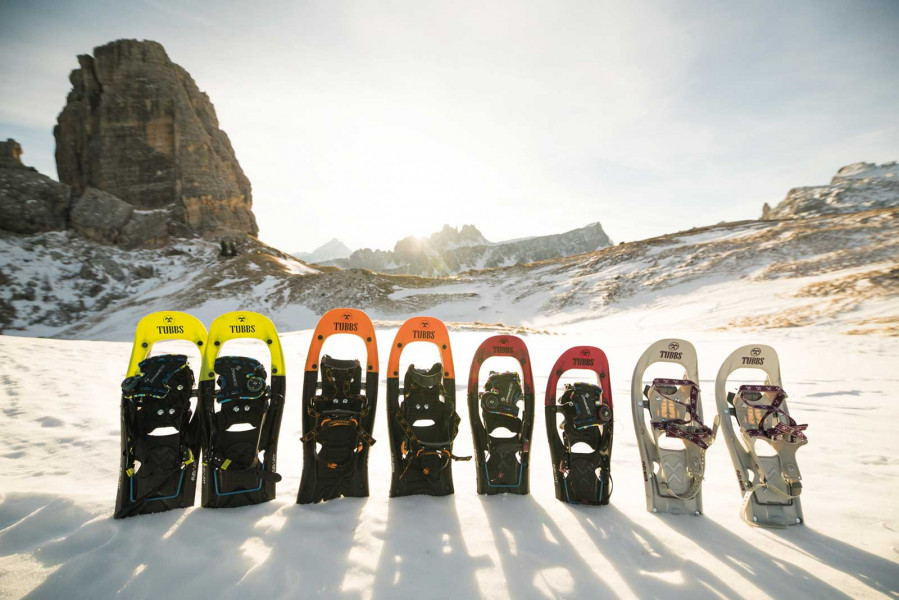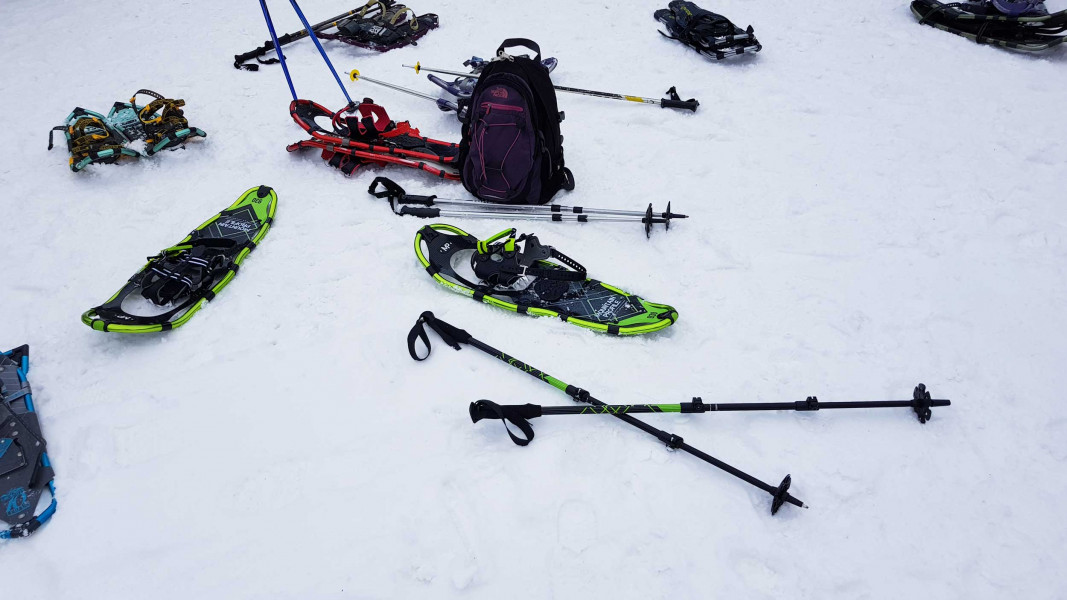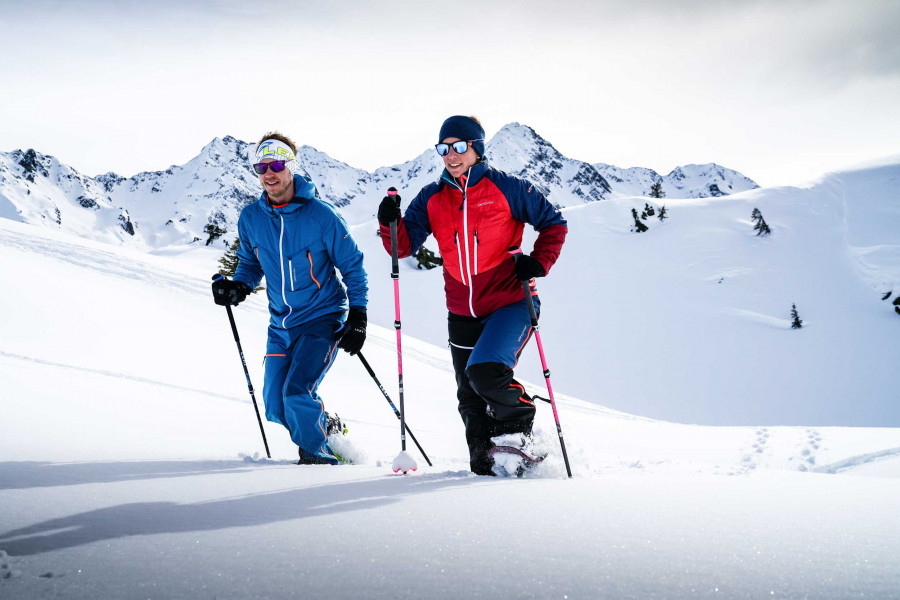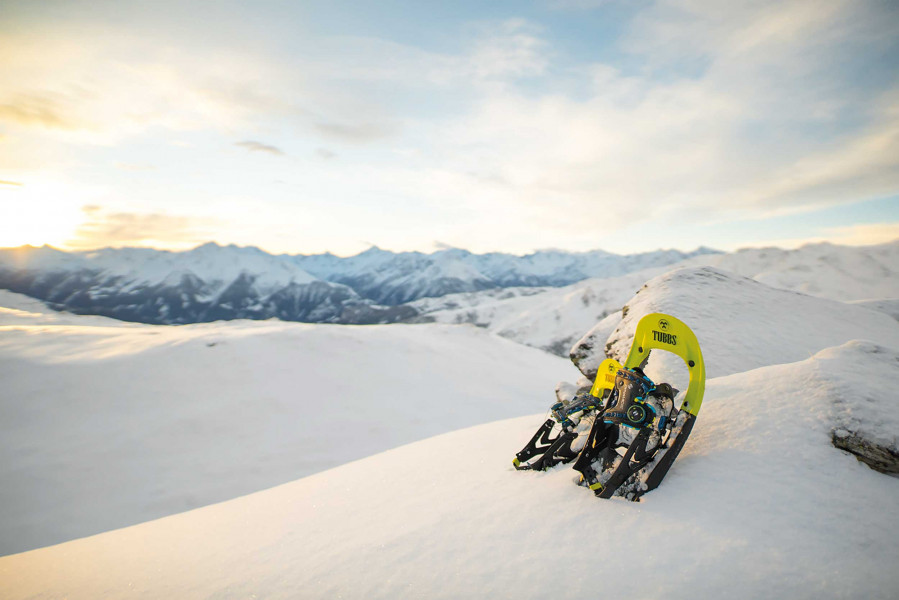No lifts, no crowds, no risk of infection: snowshoeing is very much on trend this winter. The combination of a physical challenge and an intense experience of nature is attracting more and more people to the mountains on snowshoes. We've summarized for you what's important regarding the right equipment and what you need to keep in mind concerning safety.
1.) Solid winter shoes for the base
For an unforgettable tour through beautiful winter landscapes you actually need relatively little equipment.
One of the most important items are, of course, the snowshoes. By expanding the surface area at the feet, they create a better distribution of body weight, which prevents sinking too deep into the snow. This way you can glide wonderfully on the snow without much effort.
As snowshoes are strapped over your normal shoes, make sure they are solid and waterproof. The winter shoes should be ankle-high. If you want, you can also use gaiters to prevent getting snow in your boots.
2.) Your skills determine the material
When choosing snowshoes, it depends first and foremost on the type of snowshoe hike you have in mind. While beginners tend to find themselves in flat areas, endurance athletes seek the challenge in difficult terrain.
Accordingly, there are also different snowshoe models. High-quality snowshoes are usually equipped with a plastic or aluminum frame as well as sturdy prongs and a gripping claw on the bottom. For beginners, we recommend snowshoes with aluminum frames, as they are particularly lightweight.
If you are looking for fun in more demanding alpine terrain, you should go for snowshoes with a high-performance plastic frame. They provide the best grip, are very cold-resistant and can endure any winter adventure.
3.) Right size and solid binding
There are also different sizes for snowshoes (22 to 30), but they have nothing to do with the shoe sizes we know. The right size plays a decisive role when using snowshoes, because it prevents the hiker from sinking into the snow.
In addition to the actual body weight, the additional weight due to equipment, such as a full backpack, must also be taken into account. Here is an approximate guide: for under 70 kg weight shoe size 22 is sufficient, from 100 kg you should choose size 30.
When buying snowshoes, you should also pay attention to the quality of the binding. It is important that the binding encloses the foot well, fits tightly and yet is easily adjustable even with gloves on. If you want to be more flexible, we also recommend an adjustable binding!
4.) Trekking poles can help
Almost as important as snowshoes when snowshoeing are trekking poles, preferably telescopic poles. These are to be individually adapted to the respective body size of the user or the prevailing snow conditions.
Large winter plates at the end of the pole are particularly practical. They prevent the pole from sinking too deeply into the snow
5.) Weatherproof ski clothing
Whether you are a beginner or a professional, snowshoeing can be quite strenuous. Therefore, you should make sure that your clothing is highly breathable. You are best protected and equipped with wind- and waterproof ski or touring clothing.
Touring trousers usually have a reinforcement on the legs, which protects you and your trousers sufficiently from the sharp prongs of the snowshoes. An underarm ventilation in the jacket is also particularly pleasant, so you can literally let off some steam during intense ascents.
6.) What you should not forget...
You should always carry a certain basic equipment with you, even on snowshoe tours. In addition to the utensils already mentioned, a backpack is extremely helpful. In it you can easily stow away items that are temporarily not needed and store a change of clothes and food.
In addition, you should always pack a first aid kit to be able to act properly in an emergency. Always go into the mountains with a mobile phone so that you can make an emergency call in case of an accident.
If you are planning a longer tour or one lasting several days, you should also equip yourself with a headlamp so that you can reach your destination safely even after dark.
7.) Safety always comes first
Even when snowshoeing, depending on where you are, you must always be aware of the avalanche risk. If you want to stay off secured trails, you always have to read the current avalanche report before starting your hike. Avalanche equipment including a probe, avalanche transceiver and shovel should always be carried on very demanding tours.
It is also advisable never to go on a snowshoe hike alone. You are safer in a group and it is even more fun to enjoy the wonderful winter scenery with friends!
Get informed when there is fresh snow
Schneeticker

